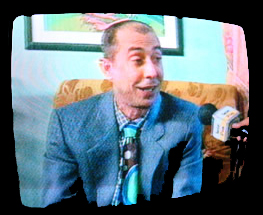Cuba’s Stage and Sitcom Characters: A Reflection of our Reality
Dariela Aquique

HAVANA TIMES — The performance arts will always be a living reflection of the society that produces them at a given point in history. Their characters are an illustration of the way people are, think and behave.
It was thanks to Francisco Covarrubias that “Cuban lingo” began to be heard on the island’s stages. He was the first to use such characters as the black man, the Chinaman, the Spaniard and the mulatto woman, considered archetypes of Cuba’s vernacular theatre.
These characters were nothing other than a representation of Cuban society in colonial times: the immigrants who came to the island to amass riches, the black men and mixed raced women, an expression of Cuba’s nascent racial and cultural identity. Since then, they have not been absent from the island’s stages.
With the arrival of television, they began to appear on our screens, particularly in comedy shows such as the popular, folksy program San Nicolas del Peladero which will be forever remembered by Cuban audiences.
The show recreated a small town during Cuba’s pre-revolutionary era. It had such characters as Mayor Plutarco and Mayoress Remigia, the butler Agmenon, Sargeant Arencibia, flatterers like Eufrates del Valle, politicians like Ñico Rutina and poor townsfolk like Simplicio or Micaela la salvaje.
Detras de la fachada (“Behind the Facade”) was another popular Cuban show in 70s and 80s. It was a sitcom that portrayed the mix-ups and conflicts in a building in Havana and the idiosyncrasies of the neighboring families.
Such everyday problems and issues as broken elevators, volunteer work and meetings, the workings of the Council of Neighbors and other matters made up the plots of the episodes. The characters, with such names as Cuca, Manolo, Monga and Bernabe, were a representation of the Cuban family at the time.
Contemporary comedy programs portray our society as it is today. Till recently, Cuban television aired a humorous show titled Deja que yo te cuente (“Let Me Tell You”) which was divided into three segments:
A sketch set in the sticks, dealing with typical countryside issues and featuring the peasant Urbinito, his girlfriend Arturita, the old man Pipo Perez and their neighbors; an interview section, aired by the fictitious Tele Pio, with the regular guest Profesor Mentepollo (“Professor Chickenbrain”) and a sitcom segment set in a repair workshop, whose workers (Maraca, Flor de Anis and Pillo) are constantly harassed by La Llave, the union secretary or Lindoro Incapaz, the company manager.
Every Monday night, Cuban television also airs the show Vivir del cuento (“No Hard Work”), a sitcom that depicts everyday life in Cuba today. The characters are Panfilo, a pensioner traumatized by his ration booklet, his friend Chquera, another pensioner who makes a living by “scrounging up a few pennies” here and there and Facundo, a man who’s always spying and ratting on people.
The characters that have taken our stages and appeared on our screens to depict our society in the course of history have been very picturesque (as you can see, their names are fairly explicit allusions to different aspects of our society and culture).
Black men, Spaniards, people from China and mulatto women were the stuff of plays during colonial times. In republican times, it was mayors, mayoresses, politickers, police officers and poor people. Years ago, it was everyday neighbors.
Today, we have characters like Mentepollo, a pseudo-know-it-all who voices harsh social criticisms, Lindoro Incapaz, a demagogical and mediocre company manager, Panfilo, a frustrated pensioner and Facundo, a no-nonsense neighborhood rat.





